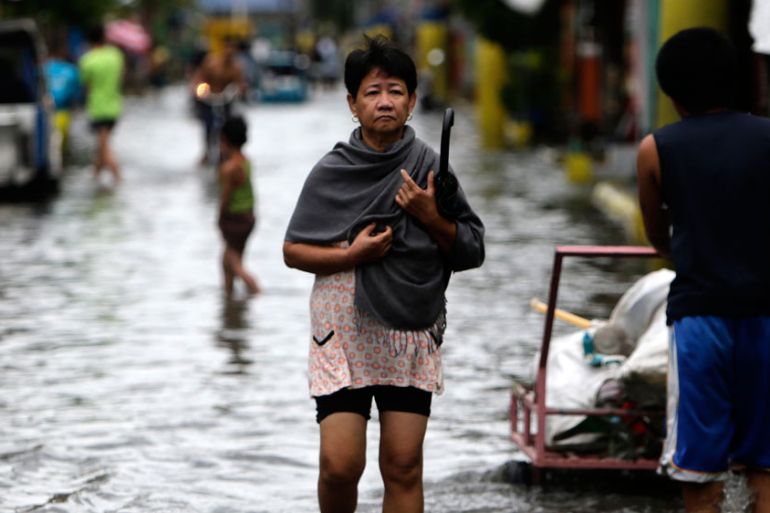Typhoon Goni set to threaten southern Japan
The powerful cyclone has already caused flooding, landslides and fatalities in the Philippines

After battering the Philippines, Typhoon Goni has had a near miss with Taiwan, and is expected to threaten southern Japan in the next few days.
Typhoon Goni delivered the expected torrential rain across the Philippines on Thursday and Friday. Central and northern parts of the country experienced as much as 500mm of rain in some areas.
Keep reading
list of 4 itemsAfter the Hurricane
World’s coral reefs face global bleaching crisis
Why is Germany maintaining economic ties with China?
Thousands of people were evacuated in Cagayan and Batanes provinces before sustained winds of 170km/h, and gusts of 205km/h pounded the region.
The rain triggered flash flooding and landslides which killed at least 10 people and left 17 missing in the north of Luzon.
|
|
Part of Goni’s threat was its very slow speed.
As it headed in from the Pacific towards Luzon, it slowed to less than 10km/h before making a sharp 90 degree turn to the right. This allowed the rain to continue to fall for more than 48 hours, far longer than would usually be expected.
Goni’s right turn was sharp enough to keep it largely clear of Taiwan.
There were fears that the eastern side of the island could experience between 300 and 500mm of rain. As a precaution, thousands of people were evacuated from their homes, including 1,500 from the spring area of Wulai, just outside Taipei.
Wulai had already been devastated by the impact of Typhoon Soudelor which struck barely two weeks ago.
Fortunately, Goni passed approximately 250km to the east of the island and its outer rainbands barely troubled the island.
Goni is expected to remain a potent force as it heads northeastwards towards southern Japan. By midnight GMT on Tuesday, it is expected to be lying close to the southern island of Kyushu with sustained winds close to 150km/h, the equivalent of a Category 1 hurricane on the Saffir-Simpson scale.
Torrential rain could lead to flash flooding, and the risk of landslides is high.